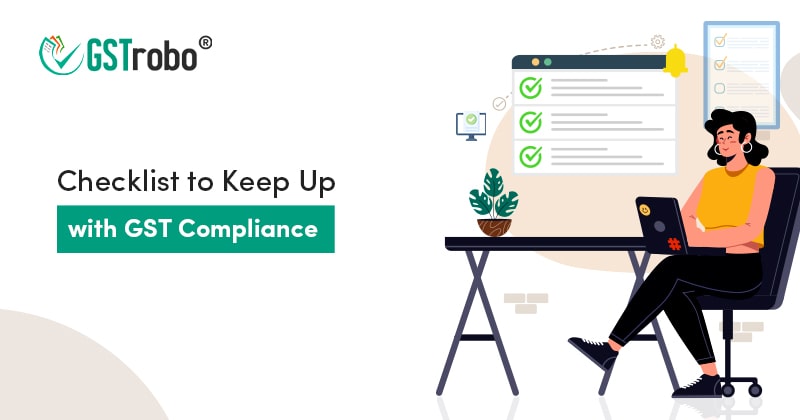Checklist to Keep Up with GST Compliance
The implementation of the GST has resulted in significant tax reform in the country. The system combines several state and central taxes into a single fungible tax. The tax collecting mechanism was improved by this much-needed change, which increased transparency and simplified administrative paperwork. Since its inception, GST has been excellent news for most businesses, particularly small and medium-sized organizations that rely on technology to handle chores such as registration, GST return filing, e-way bill & e-invoice generation.

Compliance rules have been developed as part of the GST framework, which requires businesses to remain compliant. The government has mandated that all businesses follow the GST compliance regulations.
Although these regulations are revised regularly (as per government standards), they may be divided into three categories:
- Compliance with the registration requirements
- Compliance with Tax Invoices
- Compliance with the filing of tax returns
Other regulations are different depending on the type of business.
Compliance with GST Registration
The first step toward compliance is to register for GST. The registration process may be completed online at www.gst.gov.in. The procedure is quite simple; nevertheless, there are a few things to remember to stay compliant. GST registration must be based on a company’s yearly revenue or turnover.
Businesses that deal with the supply of goods and have an aggregate turnover of more than INR 40 lakhs in a financial year are required to be registered.
Businesses that provide services or both goods and services and have an aggregate turnover of more than INR 20 lakhs in a financial year are required to be registered.
Businesses with an aggregated turnover mentioned above are required to register for GST and must comply with other GST rules. Non-compliance with GST registration results in severe fines from the CBIC (Central Board of Indirect Taxes and Customs). A penalty equivalent to INR 10,000 or tax evaded, whichever is higher needs to be paid. Non-compliance fines are outlined in section 122 of the CGST Act.
Compliance with Tax Invoices
Businesses that are GST-registered must follow invoicing guidelines to pass on the input tax credit. Businesses are obligated to create e-invoices with every sale of products or services as part of their everyday operations. The following necessary components must be included on these invoices to comply with compliance rules:
- Date and invoice number
- Name of the recipient
- Shipping Addresses of the recipient
- Billing Address
- GSTIN of the supplier
- GSTIN of the recipient
- Place of supply
- HSN code for good and SAC for services
- Description, amount, unit, and the total value of the item
- Discounts and taxable value
- Tax rates and amounts
- Reverse charge applicability
- The Supplier’s signature
- IRN (Invoice Reference Number)
- QR Code
As per the latest mandate, every taxpayer whose aggregate turnover exceeds INR 20 Crores needs to comply with the e-invoicing mandate from April 1, 2022.
All items must be stated on the GST invoice for a firm to comply with invoicing compliance regulations. Non-compliance with GST invoicing can result in a penalty of INR 10,000 or 100% of the tax evaded (whichever is higher) for failing to provide an invoice and up to INR 25,000 for erroneous invoicing.
Compliance with the GST Return
All registered businesses are required to file monthly, quarterly, and annual returns. The frequency of returns is mostly determined by the sort of business activity. GST returns must be submitted electronically using the GST portal or via GST software. The GST return forms needed to file by the normal taxpayers are listed below:
GSTR-1 is a form that is used to report sales to the government.
GSTR-3B is a simplified return used to disclose a tax period’s total GST liabilities. It must be self-declared monthly to provide a summary of all outward supplies made, input tax credits claimed, tax liability determined, and taxes paid. It is required of all GST-registered taxpayers.
GSTR-9 returns are filed yearly by all GST-registered taxpayers. Annual GST return comprises data of outward supplies made, inward supplies received, and taxes owed and paid for the preceding year under different tax headings. It is a compilation of all monthly or quarterly returns (GSTR-1, GSTR-2A/2B, GSTR-3B) filed throughout the year.
The Bottom Line
Now that you know how to become GST compliant, it’s critical to maintain your company up to date on the current GST compliance regulations to avoid fines. GSTrobo® contains a wealth of information on GST as well as other financial and taxation-related topics.
